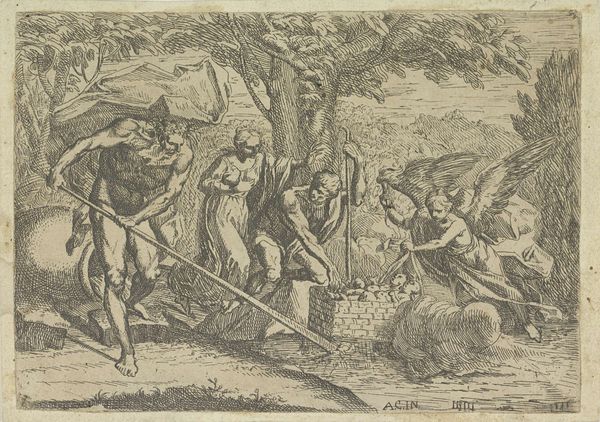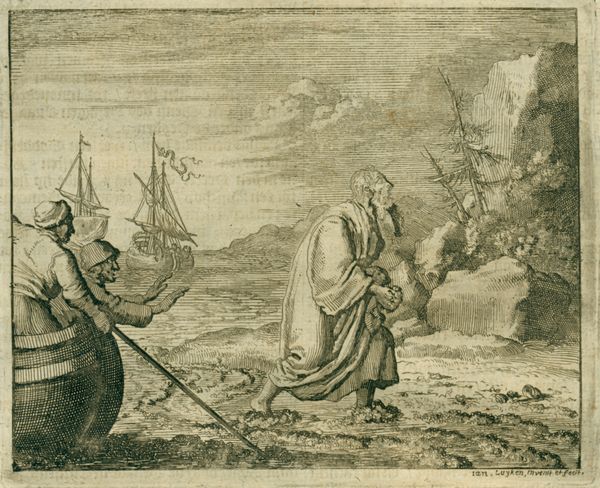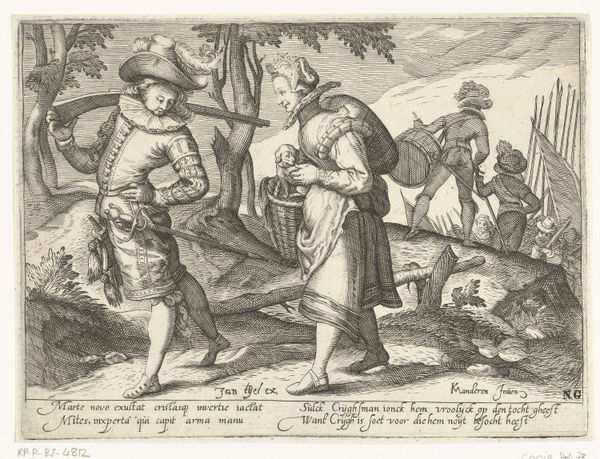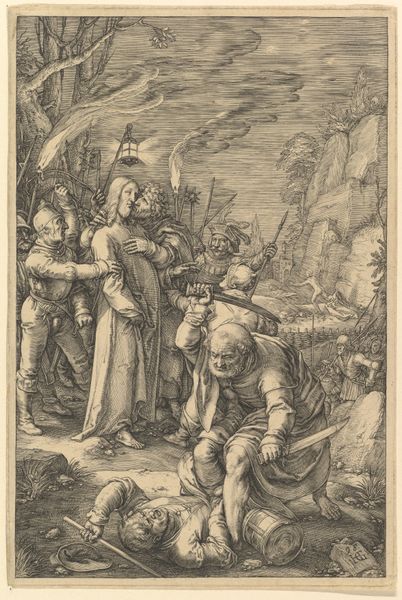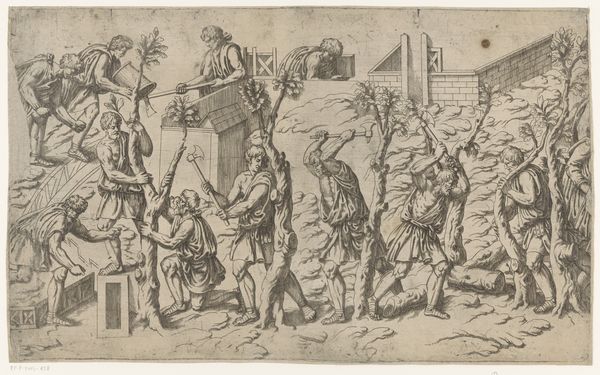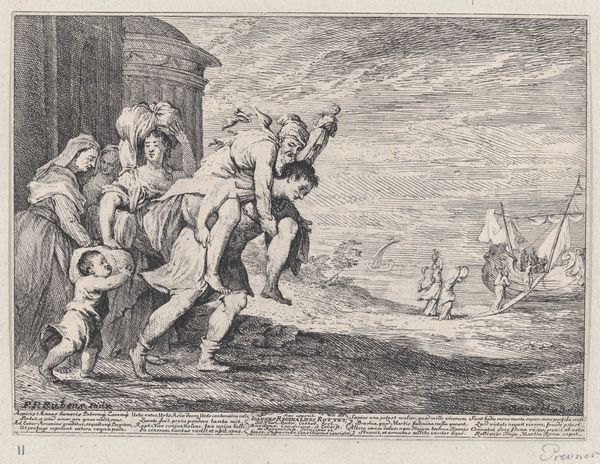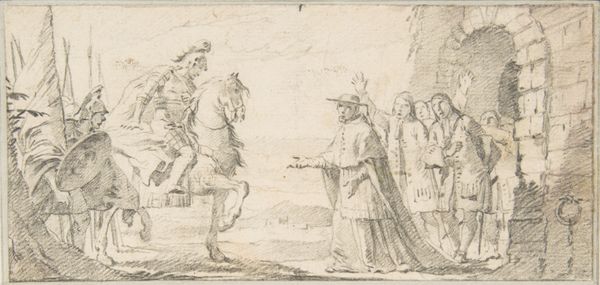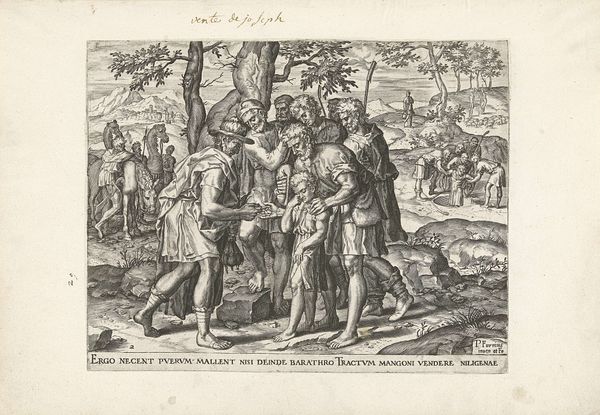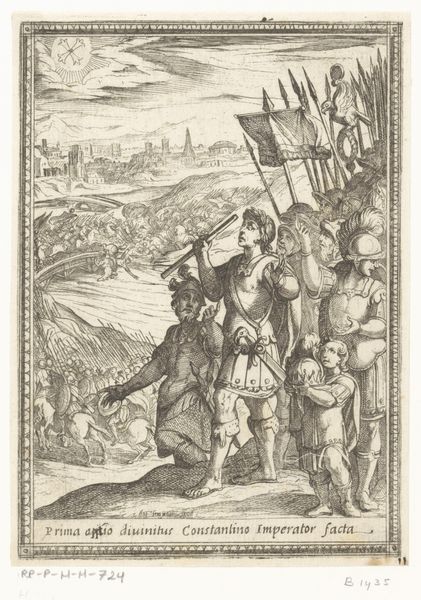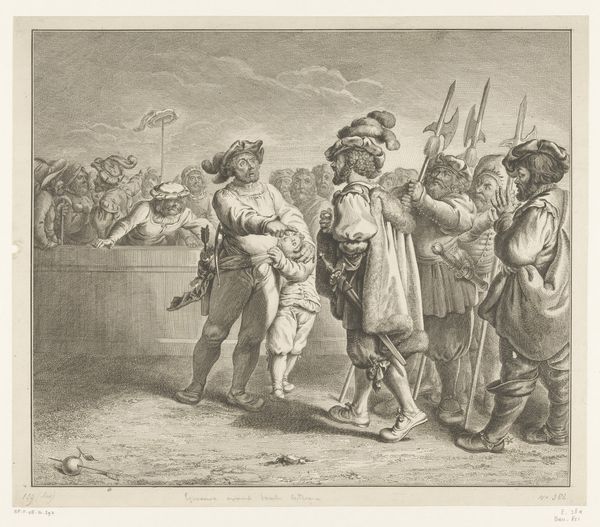
print, engraving
#
narrative-art
#
baroque
# print
#
landscape
#
figuration
#
history-painting
#
engraving
Dimensions: plate: 10.7 x 15.9 cm (4 3/16 x 6 1/4 in.) sheet: 11.5 x 17.9 cm (4 1/2 x 7 1/16 in.)
Copyright: National Gallery of Art: CC0 1.0
Willem Basse created this etching, “The Abduction of Europa,” in the 17th century. The etching process involves covering a metal plate with a waxy, acid-resistant substance called a ground. The artist then scratches an image into the ground, exposing the metal. The plate is then submerged in acid, which bites into the exposed lines, creating grooves. Ink is applied to the plate, filling the grooves, and the surface is wiped clean. Finally, the plate is pressed onto paper, transferring the ink and creating the print. The fine lines and delicate details are characteristic of this printmaking technique. The quality of the lines—their depth and width—directly relate to the artist's control over the etching process, and the time spent immersed in acid. This image of abduction is reproduced with an economy of line, the tonal gradations carefully considered and controlled, despite the apparently simple means of production. Considering the labor involved and the final aesthetic, we can appreciate printmaking’s unique position, both as a skilled craft and as a mode of mass production.
Comments
No comments
Be the first to comment and join the conversation on the ultimate creative platform.

